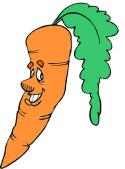|
|
|
 |
Wine Recipes Page 2 |  |
|
Broad Bean |
||
| Carrot
Carrots 5lb or 2.5kg Wheat and Barley(crushed) 1lb or 500 g Oranges 2 Lemons 2 Sugar 2.5lb or 1.25 kg Water 8 pints or 4.5litres Tannin. Yeast and Yeast nutrient. Clean the carrots, dice them and boil gently in 6 pints/3.5 litres of water to which the crushed cereal and the oranges and lemon rinds have been added. When the carrots are tender, strain off the liquid into a polythene bucket, add the remaining cold water and allow to cool. Now put in the fruit juices and test the acidity, using citric acid if more is needed. Stir in the sugar, and when it has dissolved, take and record a hydrometer reading. Finally put in tannin, yeast, and yeast nutrient; cover and put aside in a warm place to ferment. |
||
|
Currant (dried.) Currants 3lb or 1.5kg. Citric acid 2tsp or 2tsp. Sugar 2.5lb or 1.25kg. Water 8pints or 4.5 litres. Pectolytic Enzyme. Tannin. Yeast and Yeast nutrient. Soak the currants overnight in 4 pints/2.25 litres of water, then bring to the boil and simmer gently for 15 minutes. Transfer the currants and the liquid to a polythene bucket containing 4 pints/2.25 litres of cold water. Add the Pectolytic Enzyme and leave for at least 24 hours. Now strain through a nylon bag and squeeze out as much liquid as possible. Add the citric acid and test the acidity. Stir in the sugar and, when it has all dissolved, take a hydrometer reading. Finally put in the tannin, yeast, and yeast nutrient and leave in a warm place to ferment. |
||
| Coffee
Coffee(fresh ground) 1/2lb or 225g Lemons, large 2 Sugar 2 1/2lbs or 1.25 kg Water 8pints or 4,5 litres Yeast and yeast nutrient Pare the lemons thinly and boil the rinds and coffee in 4 pints/ 2.25 litres of water for 30 minutes. Strain into a polythene bucket and add 4 pints / 2.25 litres of cold water . Now put in the juice from the lemons and check the acidity. Pour in the sugar, stir until it has dissolved and take a hydrometer reading. Add the yeast nutrient and yeast, cover and ferment. |
||
 Celery. Celery stalks 4lb or 2 kg. Lemons (large) 2 Sugar 2.5lb or 1.25kg. Water 8 pints or 4.5litres. Tannin. Yeast and Yeast nutrients. The coarser outside stalks are quite suitable but discard the leaves. Cut up the celery and boil it very gently with the thin parings from the lemons in 4-6 pints/2.25-3.5 litres of water. When the celery is tender, strain off the liquid into a polythene bucket containing the remainder of the cold water. Allow it to cool, add the lemon juice and test the acidity, adjusting with citric acid if necessary. The must is now ready to receive the sugar. Stir it in well and then take, and record, a hydrometer reading. Put in the tannin, yeast nutrient and yeast, cover the bucket and place in a warm room to ferment. This wine does not carry much colour and you may prefer to use brown sugar to remedy this. |
||
| Date
Dried dates 4lb or 2 kg Lemons 4 Sugar 1lb or 500g Water 8pints or 4.5litres Tannin Yeast and yeast nutrient Chop the dates and put them into a saucepan with about half a dozen thinly pared lemon rinds. Put in the 4 pints of water, bring to the boil and simmer gently for 30 minutes. A great deal of sugar will have been extracted during this process. Strain off the liquid into a polythene bucket containing 0.5lb. Of sugar. Stir until the sugar has all dissolved and then put in 4 pints of cold water. When it has cooled to below 27C, then take a reading with the hydrometer and add the rest of the sugar, if necessary, bring to the correct initial reading. Now stir in the lemon juice and check the acidity. Lastly add the tannin, yeast and yeast nutrient. Put in a warm place and leave to ferment. |
||
 Cherry Cherries 8lbs or 3.75kg Lemons Large 1 Sugar 2.5lbs or 1.25 kg Boiling water 7pints or 4litres Pectolytic enzyme Tannin Yeast and Yeast nutrient. Remove any stalks and then put the cherries into a polythene bucket. Pour on the boiling water and allow it to cool. Now crush the fruit with a large wooden spoon and add the Pectolytic enzyme. Cover the bucket and leave it for 3-4 days, stirring the contents twice daily. Strain into another bucket using a fine nylon bag, add the lemon juice and test for acidity. Put in the sugar and stir well until it has all dissolved. Then take, and record, a reading with the hydrometer. Finally add tannin, yeast nutrient and yeast and put in a warm place to ferment. |
||